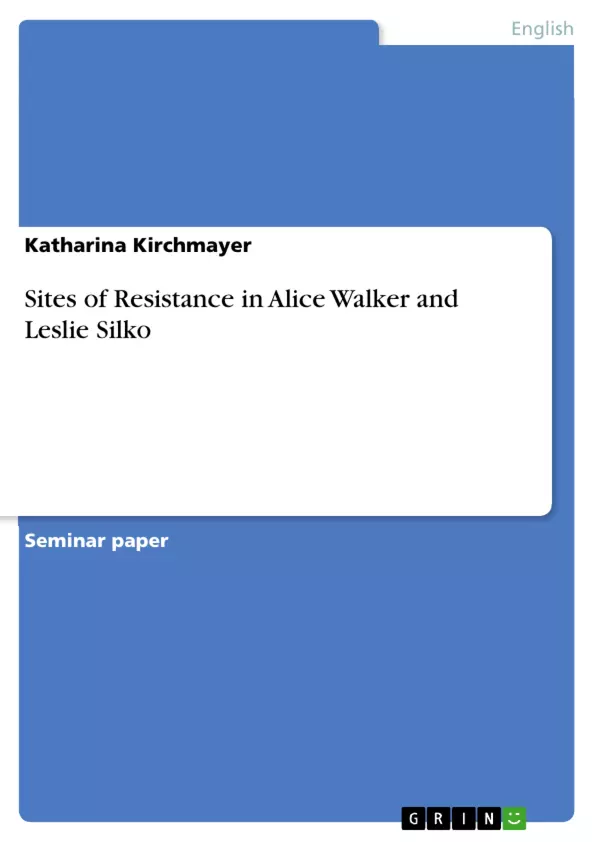This term paper aims at finding parallels by comparing the two short stories ‘’Everyday Use’’ by Alice Walker and ‘’The Storyteller’’ by Leslie Marmon Silko in a way that will prove that in both texts simple traditions generate a sense of community, amount to essential elements of cultural heritage and develop ‘homeplaces’ into sites of resistance aspiring to cultural survival of heritage and the community values.
Inhaltsverzeichnis (Table of Contents)
- 1. Introduction
- 2. Theory Part
- 3. Comparative Analysis of "The Storyteller" and “Everyday Use”
- 3.1. Homeplace
- 3.2. Community
- 3.3. Cultural Survival
- 4. Conclusion
- 5. Bibliography
- 6. Appendix
Zielsetzung und Themenschwerpunkte (Objectives and Key Themes)
This term paper aims to analyze the short stories "Everyday Use" by Alice Walker and "The Storyteller" by Leslie Marmon Silko, exploring how simple traditions contribute to a sense of community, serve as essential elements of cultural heritage, and transform "homeplaces" into sites of resistance. The paper will demonstrate how these stories depict the cultural survival of heritage and community values.
- The significance of cultural traditions in fostering a sense of community.
- The role of oral storytelling and quilting in preserving cultural heritage.
- The concept of "homeplace" as a site of resistance and survival.
- The connection between cultural identity and the struggle for social change.
- The importance of recognizing and valuing diverse cultural perspectives.
Zusammenfassung der Kapitel (Chapter Summaries)
- Introduction: This chapter introduces the two short stories, "The Storyteller" and "Everyday Use," highlighting their shared focus on culture and community. It defines the term "culture" as inherited traditions within an ethnic group, emphasizing the role of storytelling and quilting in preserving cultural values.
- Theory Part: This chapter explores the concept of "Home" in American feminist scholarship through four theoretical concepts. It examines Betty Friedan's "The Problem that has no Name," which focuses on the post-war era and the pressure placed on women to be housewives. It then contrasts this with Virginia Woolf's "A Room of One's Own," which highlights the importance of independent space and resources for female authors. These contrasting perspectives provide a framework for understanding the complexities of "home" and its significance in shaping individual identity.
- Comparative Analysis of "The Storyteller" and "Everyday Use": This chapter delves into the comparative analysis of the two short stories, examining key themes such as "homeplace," "community," and "cultural survival." It explores how each story portrays the struggles and triumphs of cultural preservation in the face of societal pressures and cultural appropriation.
Schlüsselwörter (Keywords)
The key concepts explored in this term paper include cultural traditions, storytelling, quilting, community, homeplace, resistance, cultural survival, heritage, cultural identity, and social change.
- Citar trabajo
- Mag. Katharina Kirchmayer (Autor), 2010, Sites of Resistance in Alice Walker and Leslie Silko , Múnich, GRIN Verlag, https://www.grin.com/document/152075



